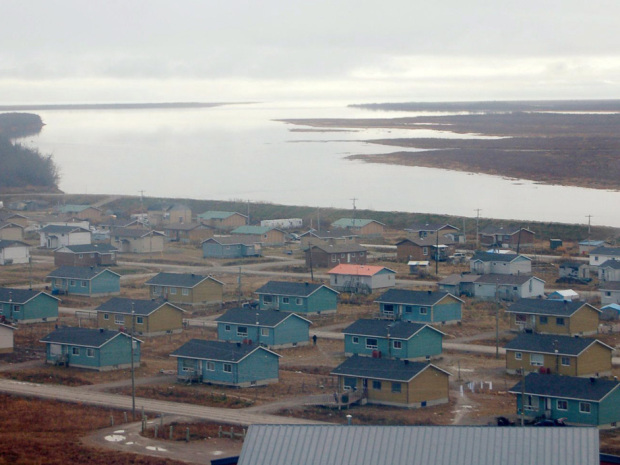Should a national public inquiry be convened to shine a klieg light on the plight of missing and murdered indigenous women? Absolutely. But let there be no flinching from the result, wherever it may lead — even if that is a final indictment of the parlous reserve system itself, and a concerted push to abolish the Indian Act, appalling racist relic that it is, once and for all.
RCMP Commissioner Bob Paulson caused a stir Friday with the release of a letter, addressed to Grand Chief Bernice Martial of the Treaty No. 6 Nations, in which he confirmed the obvious: The majority of convicted murderers of aboriginal women, 70 per cent, are aboriginal men. Similar statistics gathered from among the non-aboriginal population, or any population, will reveal a similar ratio. That’s because violence against women and children is typically perpetrated by spouses and parents. As with child sexual abuse, the bugaboo of the stranger assailant is most often a construct. The far greater risk statistically is of an assault by a family member.
Paulson’s letter was viewed among advocates for an inquiry, whose pleas the Harper government has ignored for months, as an unsubtle plug for the status quo. But there is another way to view the statistic. If it can put to rest the simplistic fiction that violence against aboriginal women is mostly perpetrated by strangers, in contradiction of all the available evidence, then it is helpful.
For at the end of all the investigating there will still be this incontrovertible fact: Though aboriginal women make up just 4.3 per cent of the population, 718,500 individuals based on the 2011 National Household Survey, they accounted for 16 per cent of the 6,551 female homicides recorded in Canada between 1980 and 2012 (which is 32 per cent of total homicides over that period). These figures were highlighted in the RCMP’s report, Missing and Murdered Aboriginal Women: A National Operational Overview, released in the spring of 2014.
So there is, in fact, a scourge of violence against indigenous women in Canada, and it is hugely disproportionate. But this doesn’t apply just to women and girls, but to the entire indigenous population. In a widely quoted essay in 2006, “Aboriginal Victimization in Canada: A summary of the Literature,” Justice Department researcher Katie Scrim found aboriginal Canadians were three times more likely to be victims of violent crime than non-aboriginals.
In some populations that figure is low: While digging through data from the Nunavut Bureau of Statistics during a visit to the territory in 2013, I was shocked to find that between 1999 and 2011 the territorial homicide rate had doubled; it was more than 12 times the national average; and Nunavut’s suicide rate is 10 times the national average. This is an epidemic, one that makes a mockery of every pleasant-sounding bit of government-sponsored Pablum about inclusion, growth and progress in the far north.
In her essay, Scrim identified five factors that were linked with an “elevated risk of offending and/or victimization” among aboriginal Canadians. These should surprise no one. They are youth, living in a single-parent home, living common-law, high unemployment and the consumption of alcohol. In other words, the same factors that correspond to higher-than-normal rates of violence in every population everywhere, worldwide.
To take a leap now to root causes: It’s a fact education on aboriginal reserves is underfunded per capita and desperately inadequate, in degrees that vary region by region. In 2011, the on-reserve high school graduation rate was 35.5 per cent, compared with nearly 80 per cent for Canadians as a whole. It is a fact, as auditor general reports ad infinitum have shown, that living conditions, employment opportunities and basic living standards on many reserves are so awful as to be inconceivable anywhere else in Canada.
It is equally true that the reserve system itself, knit together under the 1876 Indian Act, is an explicitly racist construction, holding “Indians” to be little more than children; that many reserves are set in barren, remote locations that make them economically unviable; and that the system still denies most on-reserve people the right to own their homes, which is the primary means of wealth creation and preservation for middle-class people everywhere.
Add to that a thoroughly dysfunctional governance regime, another relic of the 19th century, and you have a recipe for permanent inter-generational inequality and misery, along racial lines — apartheid, in all but name.
Redress is not a matter of a report and recommendations followed by a headline or two. Settling outstanding land claims in anything like a timely manner will require unshakable political will and cost billions. Abolition of the reserve system would have to be a long-term national project, with grandfathering to protect the most vulnerable. The Harper government has no appetite for this, clearly. Does the country?
Some Canadians would like to think so. Our collective, shameful record of stagnation and apathy on this file, year after year, suggests otherwise.




























Laissez un commentaire Votre adresse courriel ne sera pas publiée.
Veuillez vous connecter afin de laisser un commentaire.
Aucun commentaire trouvé